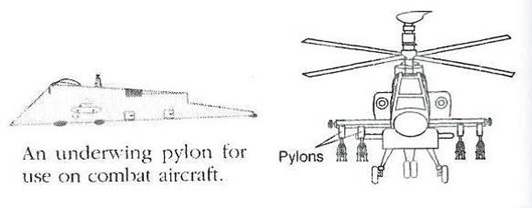<< pushback | pylon | Q-code >>
Back to: "P"
pylon
- Definição1
- A structure on the wing of an aircraft to support an engine.
- Fonte1
- CROCKER, David. Dictionary of aviation. 2nd ed. London: A&C, 2005.
- Definição2
- (1) Rigid pillar-like structure projecting upwards to carry load (eg engine) or protect occupants in overturn (crash). (2) Streamline-section structure transmitting stress from external load to airframe, eg engine pod, ordnance, drop tank etc.
- Fonte2
- GUNSTON, Bill. The Cambridge aerospace dictionary. Cambridge: Cambridge University, 2004. vii, 740 p. (Cambridge aerospace series.)
- Fonte3
- INTERNATIONAL CIVIL AVIATION ORGANIZATION. Circular 172: aircraft accident digest n.25. Montreal, 1983. (Cir. 172-AN/108)
- Nota adicional1
- Most modern jet passenger transport aircraft have pylon mounted engines.
- Nota adicional2
- The pylon is attached to the wing using spherical ball joints in three different structural elements. Two of the spherical joints are aligned vertically in a forward bulkhead which is attached to structure in the wing forward of the front spar. Another spherical joint behind the forward bulkhead transmits thrust loads from pylon structure into a thrust link which in turn is connected through another spherical joint to structure on the lower surface of the wing. The third attachment point is a spherical joint in the pylon aft bulkhead which attaches to a clevis mounted on the underside of the wing.
- Subárea1
- Aerodynamics Aircraft Structure
- Related Term
- fin
- Imagem

The structure that holds a pod or an engine nacelle to the wing or fuselage.
Fonte: KUMAR, Bharat (ed.). An illustrated dictionary of aviation. New York: McGraw-Hill, c2005. 752 p.

